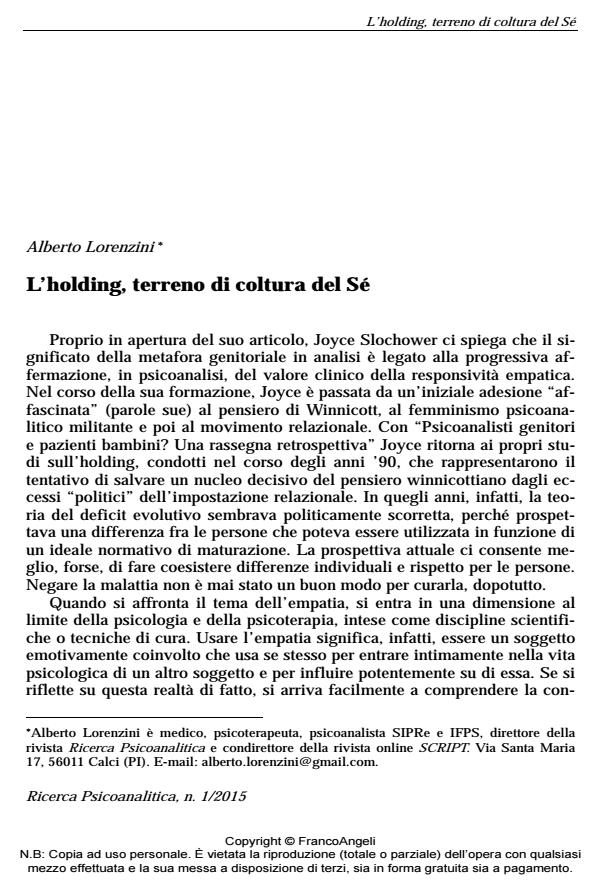Holding: an area for cultivating a not yet existing subjectivity.
Journal title RICERCA PSICOANALITICA
Author/s Alberto Lorenzini
Publishing Year 2015 Issue 2015/1
Language Italian Pages 10 P. 55-64 File size 60 KB
DOI 10.3280/RPR2015-001005
DOI is like a bar code for intellectual property: to have more infomation
click here
Below, you can see the article first page
If you want to buy this article in PDF format, you can do it, following the instructions to buy download credits

FrancoAngeli is member of Publishers International Linking Association, Inc (PILA), a not-for-profit association which run the CrossRef service enabling links to and from online scholarly content.
Reflecting on Joyce Slochower’s pages, Lorenzini reflects on the endless polemics that characterized the discussion on empathy, references to the self and developmental deficits among relational clinicians. He is convinced that this confusion derives from a dangerous conceptual void directly related to the revolution tried by self psychologies and the relational movement: to put subjectivity at the centre of the psychological life of human beings. This is why he starts his discussion with an effort at clarifying some basic tenets on subjectivity and consciousness. He then continues by suggesting that the false dichotomy that opposes holding and mutuality depends on the frequent fallacy of locating subjectivity at the emotional level of consciousness. In procedural terms holding and mutuality can find a union and contribute to creating the indispensable area for cultivating the development of the patient’s subjectivity.
Keywords: Holding, consciousness, subjectivity, self, mutuality, relational tendency
- Lo "psicodramma" in seduta Alberto Lorenzini, in RICERCA PSICOANALITICA 3/2016 pp.41
DOI: 10.3280/RPR2016-003004 - Il processo referenziale: cognizione o coscienza incarnata? Alberto Lorenzini, in RICERCA PSICOANALITICA 3/2015 pp.67
DOI: 10.3280/RPR2015-003006
Alberto Lorenzini, L’holding, terreno di coltura del Sé in "RICERCA PSICOANALITICA" 1/2015, pp 55-64, DOI: 10.3280/RPR2015-001005